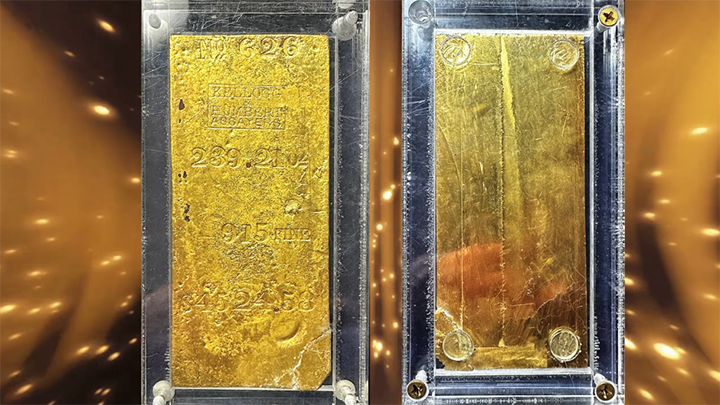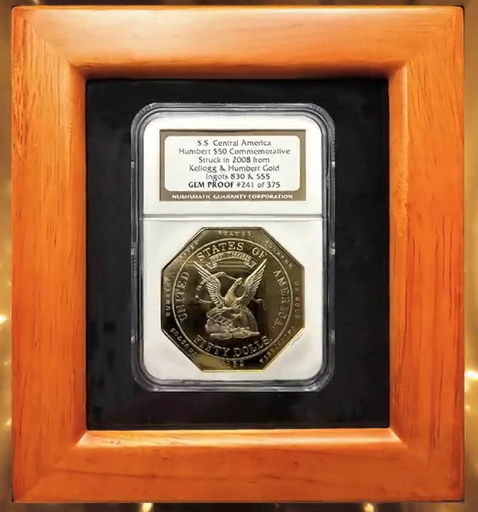
Introduction
The SS Central America, also known as the "Ship of Gold," sank in 1857. The shipwreck carried massive gold lost during the California Gold Rush. Additionally, large Kellogg & Humbert gold ingots were among the treasures recovered. Obviously, these large gold bars were so big that they would cost over a half-million dollars based on the gold content alone. Therefore, the remarkable gold bar faceplate weighing 17 ounces was cut off to be more affordable. The original gold bar, produced by Kellogg and Humbert, weighed over 239 ounces.
The SS Central America Shipwreck
The SS Central America sank in a hurricane off the coast of the Carolinas. The ship was en route from Panama to New York, carrying passengers and gold. Over 400 lives were lost, and the ship's sinking caused a financial panic. The shipwreck remained lost for over a century until its discovery in the late 20th century. The recovery of the ship’s treasure provided a unique glimpse into the California Gold Rush era.
The Original Gold Bar and Its Faceplate
The original gold bar, crafted by Kellogg and Humbert, was meticulously cut to create the 17-ounce faceplate. The bar's original weight was 239 ounces, making it a significant piece of gold. None of these original gold rush ingots were known to survive before the shipwreck’s recovery. Over the years, they had been melted down for their gold content. The faceplates were cut from 60 different Kellogg & Humbert gold ingots. These faceplates are now highly collectible due to their historical significance.
The Rarity and Collectibility of Faceplates
Faceplates from the SS Central America are among the most coveted relics of the Gold Rush. However, collectors tightly hold them and sell them quickly when available. In fact, the faceplates' association with the Gold Rush enhances their value and desirability. Collectors appreciate the tangible connection to a pivotal era in American history. These faceplates are a direct link to the gold rush miners and the perilous journey of the SS Central America.
 The Fate of the Original Gold Bars
The Fate of the Original Gold Bars
After the faceplates were shaved off, the remainder of the gold bars were used to strike replicas of the $50 Octagonal Gold “Slug.” This coin epitomizes the California Gold Rush. Like the originals, the replicas contain 2.5 ounces of gold and feature an octagonal shape. They utilize the original obverse design along with geometric designs on the reverse. These restrikes are highly prized by collectors for their historical significance and craftsmanship.
Recent Sales and Collector Interest
We recently sold a faceplate and one of the 375 $50 restrikes to a thrilled collector. Moreover, pairing these items together creates a fascinating and valuable set. Collectors cherish these pieces for their rarity and historical importance. Consequently, the opportunity to own a piece of Gold Rush history is irresistible to many numismatists and enthusiasts.
Conclusion
The remarkable gold bar faceplate from the SS Central America is a remarkable relic of the California Gold Rush. Furthermore, their rarity, historical significance, and connection to the ill-fated ship make them highly collectible. The original gold bars, meticulously crafted by Kellogg and Humbert, provide a tangible link to a pivotal moment in American history. The $50 restrikes add another layer of intrigue, representing the enduring legacy of the Gold Rush. For more information on these fascinating pieces, or to inquire about availability, contact Austin Rare Coins at 1-800-928-6468. Another key point, we are always happy to assist fellow collectors and enthusiasts.
